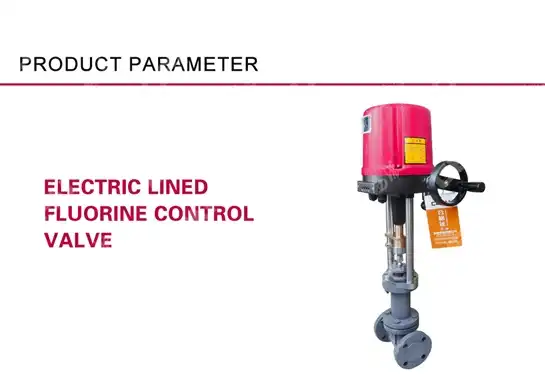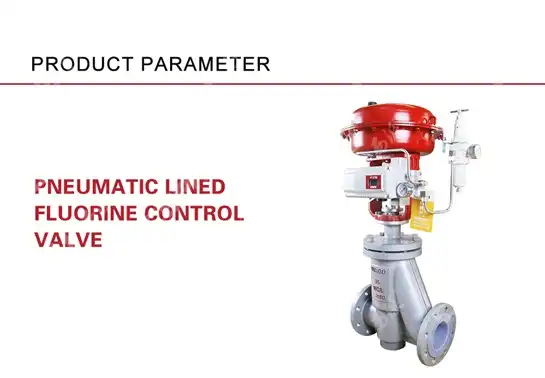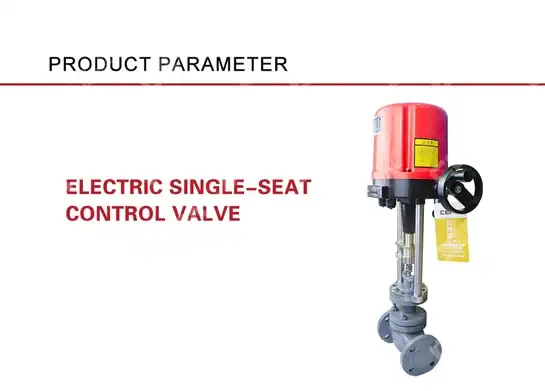Troubleshooting a Leaking Bellows Seal Control Valve: A Step-by-Step Guide
When industrial operations face unexpected downtime due to valve leakage, the financial and safety implications can be devastating. Imagine discovering a costly steam leak in your 450 PSIG boiler system at 3 AM, with production halted and emergency teams scrambling to identify the source. This nightmare scenario is precisely why understanding the troubleshooting process for leaking Bellows Seal Control Valve systems is crucial for every plant engineer and maintenance professional. This comprehensive guide provides practical, step-by-step solutions to diagnose, repair, and prevent bellows seal failures, ensuring your critical control systems maintain zero-leakage performance while protecting personnel and maximizing operational efficiency.
Understanding Bellows Seal Control Valve Fundamentals
The Bellows Seal Control Valve represents a sophisticated engineering solution designed to eliminate stem leakage in critical applications where environmental protection and personnel safety are paramount. Unlike conventional packing systems that rely on compression around the valve stem, bellows seals create a hermetic barrier using a flexible metal element that expands and contracts with stem movement while maintaining complete isolation between the process media and atmosphere. The fundamental design principle of a Bellows Seal Control Valve centers around a corrugated metal bellows, typically manufactured from high-grade stainless steel such as 304L, 316L, or specialized Hastelloy C alloys. This bellows element connects directly to the valve stem and valve body, creating an impermeable seal that moves with the stem during operation. The bellows design eliminates the need for traditional packing materials like PTFE or graphite, which can degrade over time and create fugitive emissions. In modern industrial applications, particularly those governed by strict environmental regulations, the Bellows Seal Control Valve has become indispensable. These valves excel in handling toxic, corrosive, or valuable process fluids where even minor leakage is unacceptable. The pressure-balanced valve core design ensures consistent control performance across varying differential pressures, while the equal percentage, linear, or quick opening characteristics can be tailored to specific process requirements.
-
Critical Components Requiring Regular Inspection
The bellows assembly itself consists of multiple convolutions that provide the necessary flexibility while maintaining structural integrity. Each convolution must be carefully inspected for signs of fatigue, corrosion, or mechanical damage. The valve stem connection to the bellows represents a critical welded joint that experiences both axial and rotational stresses during operation. This connection point requires particular attention during routine maintenance inspections. The valve body materials, ranging from carbon steel WCB to exotic alloys like CF8M, must be compatible with both the process media and the bellows material to prevent galvanic corrosion. The internal valve components, including the pressure-balanced valve core and seat assembly, work in conjunction with the bellows seal to provide precise flow control while maintaining zero external leakage. Electric actuators integrated with these valves typically operate on 220V or 380V power supplies and respond to 4-20mADC control signals. The actuator-to-valve connection must be properly aligned and torque-rated to prevent excessive stress transmission to the bellows assembly during operation. Environmental temperature considerations, typically ranging from -30°C to +70°C for the actuator housing, must be factored into the overall system design.
Common Root Causes of Bellows Seal Failures
Identifying the underlying causes of Bellows Seal Control Valve leakage requires a systematic approach that examines both design limitations and operational factors. The most prevalent failure mode involves bellows fatigue cracking, which typically manifests as hairline fractures along the convolution peaks or valleys. These cracks develop gradually over thousands of operating cycles and are often exacerbated by excessive stem travel, over-pressurization, or temperature cycling beyond the design envelope. Manufacturing defects in the bellows welding process can create stress concentration points that accelerate failure. Poor weld penetration, incomplete fusion, or contamination during the welding process can compromise the bellows integrity from the initial installation. Quality bellows manufacturers like CEPAI implement stringent welding procedures and 100% pressure testing to eliminate these potential failure modes before shipment. Process-related factors contribute significantly to premature bellows failures. Cavitation within the valve trim creates pressure pulses that transmit destructive vibrations through the valve stem to the bellows assembly. Similarly, excessive back pressure or rapid pressure fluctuations can overstress the bellows material beyond its fatigue limits. Chemical compatibility issues, particularly with chloride-containing media, can cause stress corrosion cracking in stainless steel bellows materials.
-
Installation and Assembly Issues
Improper installation techniques frequently lead to bellows seal failures that could have been prevented. Over-tightening of flange connections can distort the valve body and create misalignment stresses that transfer to the bellows assembly. Conversely, insufficient flange tightening can allow pipeline stresses to be transmitted through the valve body to the internal components. Actuator alignment problems represent another critical installation consideration. Angular misalignment between the actuator output shaft and valve stem creates side-loading forces that can cause premature bellows failure. The actuator mounting must ensure concentricity within specified tolerances, typically ±0.002 inches for precision control applications. Environmental contamination during installation can also compromise bellows integrity. Foreign particles, welding spatter, or chemical residues introduced during system commissioning can create corrosion initiation sites or mechanical damage points. Proper system cleaning and flushing procedures are essential before placing Bellows Seal Control Valve systems into service.

Systematic Diagnostic Procedures
Effective troubleshooting of leaking Bellows Seal Control Valve systems begins with establishing the leak location and severity. Visual inspection should commence at the bellows-to-stem junction, examining for obvious signs of process fluid weepage or crystalline deposits that indicate intermittent leakage. Use appropriate leak detection methods, including electronic sniffers for volatile compounds or soap bubble testing for gas applications. The diagnostic process should progress systematically from external observations to detailed component analysis. Document the valve operating conditions at the time of failure, including process pressure, temperature, flow rate, and control signal levels. Compare these parameters against the valve's design specifications to identify potential overstress conditions. Review maintenance records to establish the valve's operating history and previous repair activities. Pressure testing represents a critical diagnostic tool for confirming bellows integrity. Hydrostatic testing should be performed at 1.5 times the valve's rated pressure using clean, non-corrosive test media. During testing, monitor for pressure decay that indicates internal leakage paths. For gas service applications, pneumatic testing with nitrogen or clean, dry air can reveal smaller leaks that might not be apparent during hydrostatic testing.
-
Advanced Inspection Techniques
Non-destructive examination techniques provide valuable insights into bellows condition without requiring complete valve disassembly. Dye penetrant inspection can reveal surface cracks or porosity in the bellows material that may not be visible to the naked eye. Radiographic examination of critical weld joints can identify subsurface defects that could lead to future failures. Ultrasonic thickness measurement helps assess bellows wall condition, particularly in corrosive service applications. Systematic thickness mapping can reveal localized thinning patterns that indicate preferential attack or erosion damage. This information guides repair versus replacement decisions and helps establish appropriate inspection intervals for similar valves in the system. Vibration analysis during valve operation can identify mechanical problems that stress the bellows assembly. Excessive stem friction, actuator problems, or process-induced vibrations create characteristic frequency signatures that experienced technicians can interpret. Trending these measurements over time provides early warning of developing problems before catastrophic failure occurs.
Step-by-Step Repair Procedures
Once the failure mode has been identified and documented, systematic repair procedures must be followed to restore the Bellows Seal Control Valve to reliable operation. Safety considerations are paramount during any valve repair activity. Ensure complete process isolation and depressurization before beginning work. Verify that hazardous process fluids have been safely drained and that appropriate personal protective equipment is available for all personnel involved in the repair process. Bellows replacement represents the most common repair procedure for failed seals. Begin by carefully removing the actuator assembly, taking care to support the valve stem and prevent damage to associated components. Document the actuator position and control signal settings to facilitate reassembly. Remove the valve bonnet using appropriate lifting equipment and proper rigging techniques to prevent damage to the valve body or internal components. The damaged bellows assembly should be carefully extracted and examined to determine the failure cause. Photograph the failed components and preserve samples for metallurgical analysis if warranted. Clean all mating surfaces thoroughly and inspect for damage that could affect the replacement bellows installation. Verify that the valve stem is straight and undamaged, as bent stems can cause premature bellows failure.
-
Quality Assurance During Assembly
Installation of the replacement bellows requires careful attention to cleanliness and proper assembly techniques. New bellows assemblies should be inspected for shipping damage and verified against the original specifications. The bellows material, typically 304L or 316L stainless steel for standard applications, must be compatible with the process media and operating conditions. Apply appropriate assembly lubricants to threaded connections, avoiding products that could contaminate the process or degrade over time. Torque all fasteners to specified values using calibrated tools, following proper tightening sequences to ensure uniform stress distribution. The bellows-to-stem connection requires particular attention to achieve proper sealing without overstressing the bellows material. Prior to final assembly, perform a thorough cleanliness inspection of all internal surfaces. Any foreign material or contamination can create leak paths or damage the new bellows during operation. Install temporary protective covers during assembly to prevent contamination from external sources.
Preventive Maintenance Best Practices
Establishing a comprehensive preventive maintenance program significantly extends Bellows Seal Control Valve service life and reduces unexpected failures. Regular inspection schedules should be based on valve criticality, operating severity, and historical performance data. High-temperature or corrosive service applications typically require more frequent inspection intervals than standard water or hydrocarbon service. Visual inspections should be performed monthly, focusing on external signs of leakage, unusual deposits, or mechanical damage. Document findings systematically and trend observations over time to identify gradual deterioration patterns. Photograph questionable areas for future comparison and to facilitate communication with maintenance planning personnel. Annual comprehensive inspections should include actuator performance verification, control signal calibration, and detailed examination of all accessible components. Verify that operating parameters remain within design specifications and investigate any deviations. Review process data logs to identify operating patterns that could affect valve longevity, such as frequent cycling, extreme temperatures, or pressure variations.
-
Operational Guidelines for Extended Service Life
Proper operating procedures significantly impact Bellows Seal Control Valve longevity. Avoid rapid cycling that subjects the bellows to unnecessary fatigue stress. When possible, implement control strategies that minimize stem movement while achieving the required process control objectives. Modern digital control systems can be programmed with deadband settings that reduce unnecessary valve movement in response to minor process variations. Temperature cycling should be minimized through proper system design and operating procedures. Gradual heating and cooling during startup and shutdown operations reduce thermal stress on the bellows assembly. Insulation systems should be designed to minimize temperature gradients across the valve body while providing adequate access for maintenance activities. Process fluid quality directly affects bellows seal performance. Implement appropriate filtration and chemical treatment programs to minimize corrosive or erosive contaminants. Regular sampling and analysis of process fluids helps identify conditions that could accelerate bellows degradation. Coordinate with process engineering personnel to address upstream problems that affect valve performance.
Advanced Troubleshooting for Complex Failures
Complex Bellows Seal Control Valve failures often require advanced diagnostic techniques and specialized expertise. Multiple failure modes can occur simultaneously, complicating the diagnostic process and requiring systematic elimination of potential causes. Intermittent failures present particular challenges, as symptoms may not be present during inspection activities. Root cause analysis becomes critical when dealing with recurring failures or premature bellows replacements. Detailed failure analysis, including metallurgical examination and chemical analysis of failed components, provides insights into the underlying failure mechanisms. This information guides design modifications or operational changes needed to prevent future occurrences. Finite element analysis of bellows stress distributions can identify design limitations or installation problems that contribute to premature failures. Modern computer modeling tools can simulate various operating conditions and predict fatigue life under different stress scenarios. This analytical approach is particularly valuable for critical applications where failure consequences are severe.
-
Integration with Modern Control Systems

Modern Bellows Seal Control Valve applications increasingly integrate with sophisticated control systems that provide real-time monitoring and diagnostic capabilities. Smart positioners equipped with diagnostic functions can detect developing problems before they result in valve failures. Signature analysis of valve response characteristics provides early warning of mechanical problems or process upsets. Remote monitoring systems allow maintenance personnel to track valve performance from centralized locations, enabling proactive maintenance scheduling and rapid response to developing problems. Data trending capabilities help establish normal operating patterns and identify deviations that warrant investigation. Integration with plant-wide asset management systems provides a comprehensive view of valve fleet performance. Predictive maintenance technologies, including vibration monitoring, thermography, and acoustic emission testing, provide non-intrusive methods for assessing valve condition during operation. These techniques complement traditional inspection methods and help optimize maintenance intervals based on actual component condition rather than arbitrary time-based schedules.
Conclusion
Successful troubleshooting of leaking Bellows Seal Control Valve systems requires a systematic approach combining thorough understanding of valve design principles with practical diagnostic skills. By following the step-by-step procedures outlined in this guide, maintenance professionals can effectively identify root causes, implement appropriate repairs, and establish preventive maintenance programs that maximize valve reliability and service life while ensuring continued protection of personnel and the environment.
Cooperate with CEPAI Group Co., LTD.
As a leading China Bellows Seal Control Valve manufacturer, CEPAI Group Co., LTD. combines decades of engineering excellence with cutting-edge intelligent manufacturing capabilities. Our state-of-the-art facility, spanning 56,000 square meters in Jiangsu Province, houses the longest high-precision intelligent manufacturing flexible production line in the Asia Pacific region, ensuring consistent quality and delivery performance for our global customers.
CEPAI's comprehensive portfolio of High Quality Bellows Seal Control Valve solutions addresses the most demanding industrial applications. As a trusted China Bellows Seal Control Valve supplier, we maintain rigorous quality standards through our ISO 9001, ISO 14001, and ISO 45001 certified management systems, while our CNAS nationally recognized laboratory ensures every product meets or exceeds international specifications. Our experienced engineering team provides customized solutions tailored to your specific requirements, backed by comprehensive pre-sales technical consultation, installation support, and after-sales service guarantee.
Whether you're seeking competitive Bellows Seal Control Valve price quotations, China Bellows Seal Control Valve wholesale opportunities, or specialized Bellows Seal Control Valve for sale configurations, CEPAI delivers unmatched value through our integrated approach combining advanced materials science, precision manufacturing, and responsive customer service. Contact our technical specialists at cepai@cepai.com to discuss your application requirements and discover why industry leaders worldwide choose CEPAI as their preferred China Bellows Seal Control Valve factory partner.
References
1. "Bellows Seal Valve Design and Application Guidelines" - American Society of Mechanical Engineers (ASME), Process Industries Division
2. "Fugitive Emissions Control in Industrial Valve Systems" - Smith, J.R., Johnson, M.K., Industrial Engineering Press
3. "Materials Selection for Corrosive Service Bellows Applications" - Metallurgical Engineering Institute, Anderson, P.L., Williams, R.T.
4. "Predictive Maintenance Strategies for Critical Control Valve Systems" - International Association of Process Safety Engineers, Thompson, D.A., Martinez, C.J.
_1745994738000.webp)
Get professional pre-sales technical consultation and valve selection services, customized solution services.

About CEPAI


